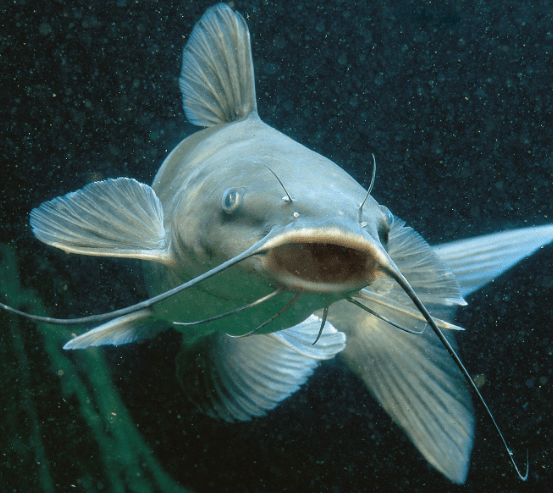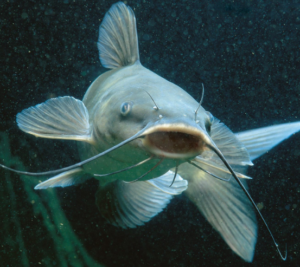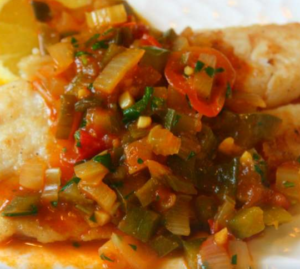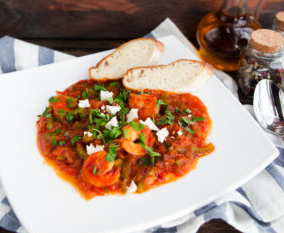Blue Catfish–One nasty fish and the perfect solution

 A new federal regulation, championed by the Mississippi Catfish Farmers Association, could hinder efforts here in the Chesapeake region to reduce the population of the invasive Blue Catfish. Introduced into the Bay some 40 years ago, the Blue Catfish – with no known predators – has surged in population. In some rivers and tributaries of the Bay they constitute 70% of the fish biomass. The catfish devour crabs, rockfish and menhaden – to name a few of the preferred species on their dining menu. Left unchecked they could destroy the native species of the Chesapeake.
A new federal regulation, championed by the Mississippi Catfish Farmers Association, could hinder efforts here in the Chesapeake region to reduce the population of the invasive Blue Catfish. Introduced into the Bay some 40 years ago, the Blue Catfish – with no known predators – has surged in population. In some rivers and tributaries of the Bay they constitute 70% of the fish biomass. The catfish devour crabs, rockfish and menhaden – to name a few of the preferred species on their dining menu. Left unchecked they could destroy the native species of the Chesapeake.
One of the leaders in the effort to reduce the number of Blue Catfish in the Bay is the Wide Net Project. Below is a preview excerpt from my upcoming new book, The New Chesapeake Kitchen, slated for publication by Johns Hopkins University Press in Spring 2018.
“The Wide Net Project’s goal is to get as much fish out of the water as possible and feed our neighbors in need, while also supporting the local economy and conservation.”
One nasty fish— and the perfect solution.
The big Blue Catfish, a powerful, aggressive invasive predator, had been wreaking havoc on the Chesapeake, devouring important natives like shad and herring—even threatening our precious blue crabs, and striking a severe blow to the health of our fishing industries. Then came The Wide Net Project, started by Sharon Feuer Gruber and Wendy Stuart.
Sharon’s experience and efforts revolved around promoting healthy food access for all, urban gardening and sustainability-focused food distribution systems. She worked with Washington DC’s Bread for the City, spearheading their farm-to-food pantry program and conceived of their nutrition education campaign. Wendy’s experience working with industry leaders in the development of Seafood Smart, a regional, scalable certification program directed by the National Aquarium in Baltimore, brought her expertise as an economist to the WNP. Together they developed a financially sound approach that would address the problem, and move beyond it towards a creative solution providing real, tangible economic and social benefits to everyone involved.
Recognizing that the Blue Cat is an edible species Sharon and Wendy sought to structure a system for harvesting and marketing it that would also support the healthy food access issues they both found so important. Building a strong coalition of industry partners, concerned environmental organizations and community activists dealing with hunger and nutrition issues, they have created a business model that will surely be replicated far and wide.
While successfully creating a healthy demand for Blue Catfish, for every pound of fish sold through regular seafood markets Wide Net donates a portion to feed neighbors in communities of need, providing fish for free or below cost to efforts like Miriam’s Kitchen (a community soup kitchen that serves 150-175 guests in their dining room every weeknight), the Arcadia Center for Sustainable Food and Agriculture, the N Street Village, and other community-based hunger-relief organizations.
Creating a thriving market for an underutilized food source has bolstered the economic vitality of the fishery industries and greatly eased the environmental stresses of this super-predator. Beyond that, by partnering with existing community efforts aimed at addressing serious issues of health and nutrition Wide Net supports hunger relief and the betterment of life for everyone in the community.
“There are too few projects that are connecting environmentalism and the various segments of the disparate food system, and the Wide Net Project does just that.”
— Barton Seaver, chef, author, and director of Harvard’s Healthy and Sustainable Food Program
 Pan-Fried Catfish with Shrimp Creole Sauce
Pan-Fried Catfish with Shrimp Creole Sauce
Catfish has some culinary detractors (you know – food snobs), but for my money it is some of the best Southern coastal cooking. There is an amazing variety of catfish to be found, both farm-raised and wild. In my opinion the best tasting catfish is the Blue Catfish which is running wild, literally, in the Chesapeake Bay. Unlike its cousin, the channel catfish, the Blue Catfish is not a bottom feeder and has a sweeter, more delicate flavor. The rendition we have here places the crisp fillets on a bed of spicy shrimp Creole – an unbelievably delicious marriage.
Serves 6
6 – Six-ounce catfish fillets
Milk, as needed
1 cup flour
1 cup fine ground yellow or white cornmeal
1 tablespoon Old Bay seasoning or Cajun seasoning
½ teaspoon cayenne pepper
Salt and freshly ground black pepper
Vegetable oil, for frying
One recipe Shrimp Creole (see note below)
Soak the catfish fillets in milk to cover in a shallow dish for 1 hour.
In a second dish, mix the flour, cornmeal, old Bay or Cajun seasonings, cayenne and salt and pepper. Remove the fish from milk, 1 fillet at a time, letting the excess milk drip back into the dish. Coat well with the cornmeal mixture.
Pour oil into a frying pan to a depth of 1-inch and place over medium heat. When the oil is hot, add as many fillets as the pan will allow. Fry about 3 to 4 minutes on each side, or until golden brown. Remove fish from the pan and drain well on paper towels.
On a warmed dinner plate make a bed of hot shrimp Creole with a fillet on top. Garnish with chopped flat-leaf parsley and lemon wedges. Simple white rice and greens are a perfect accompaniment and don’t forget to have freshly baked cornbread on hand.
Note: When preparing the Shrimp Creole recipe for use in this recipe I often substitute the small shrimp in place of the larger ones called for in the recipe. I find it works better for this dish. Another option would be to cut the larger shrimp into several pieces before cooking.
 Shrimp Creole
Shrimp Creole
5 tablespoons olive or vegetable oil
2 cups onions, small dice
1 ½ cups celery, finely diced
1 ½ cups green onions, finely chopped
1 ½ cups green bell peppers, finely diced
2 tablespoons garlic, minced
¾ teaspoon cayenne pepper
1 ½ teaspoons salt
½ teaspoon freshly ground black pepper
½ teaspoon fennel seeds
1 teaspoon Tabasco
1 ½ teaspoon dried basil
1 ½ teaspoons dried thyme
2 bay leaves
2 cups fish stock (see note below)
3 cups tomatoes, peeled and chopped, fresh or canned
2 tablespoons tomato paste
½ cup water
1 ½ pounds shrimp, peeled, deveined (reserve shells)
Heat the oil in a pot over medium heat and add the onions, cooking and stirring frequently for 8 to 10 minutes, or until nicely browned. Add the green onions and bell peppers and cook for 5 minutes more. Add garlic, cayenne, salt, pepper, fennel, Tabasco, basil, and thyme and cook for 3 minutes.
Add the bay leaves, fish stock, tomatoes, tomato paste and water. Bring mixture almost to the boil, then reduce heat, and let sauce slowly cook for 1 hour, stirring occasionally. The sauce can be prepared ahead to this point and then reheated shortly before cooking the shrimp. Before serving, reheat the Creole sauce and add the shrimp, cooking for about 5 to 6 minutes, or until the shrimp are cooked through and no longer translucent.
Note: if you are making the fish stock just for this recipe, add the shrimp shells to the stock. If you already have a fish stock on hand, add some shrimp shells to it and simmer for 15 minutes, straining out the shells before using in the Creole. If you really want to make this dish, but have neither the ingredients nor the Will to make a fish stock, don’t despair — just simmer the peeled shrimp shells with about 2 ½ cups water before preparing the Creole. This is what we call a “lickity-split” stock.

Bob St. Ours
May 2, 2017
Delicious fish. Caught a couple rock fishing last year. They were so excellent. Wish I knew where to buy them fresh